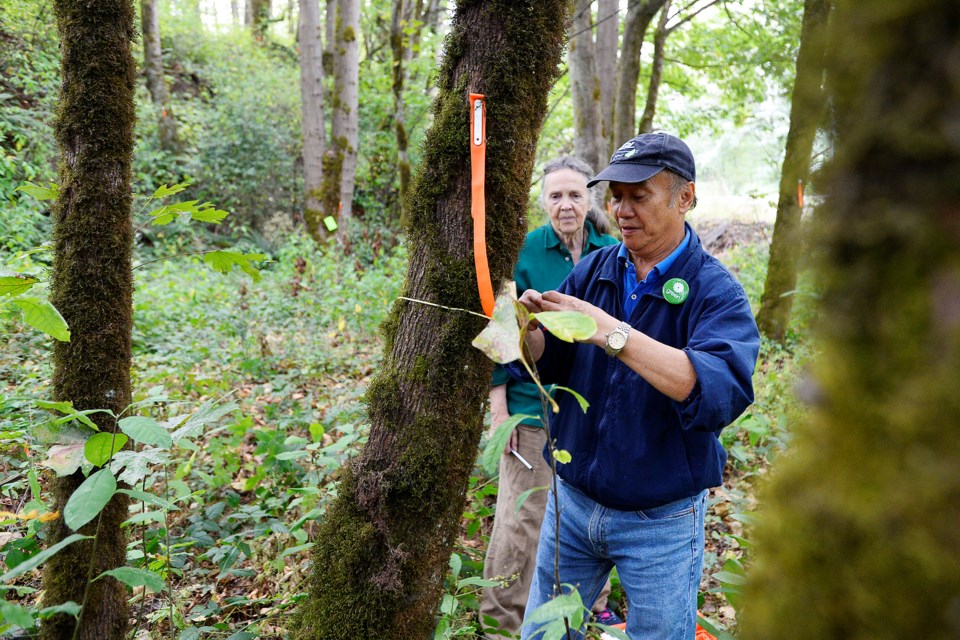New Westminster Environmental Partners is trying to assess how many trees near the Brunette River could be at risk if a pipeline plows through the area.
The existing pipeline isn’t located near the river, but the proposed Trans Mountain pipeline expansion route runs along the Brunette River, near Hume Park and the Brunette River Conservation Area. In an effort to estimate how many trees may be impacted by a new pipeline, volunteers recently counted and measured trees in the area.
“The river relies on trees to filter rain, prevent soil erosion, cool the waters, improve air quality and reduce noise pollution from the nearby roads, including the Number 1 highway,” said a press release from New Westminster Environmental Partners. “In this age of global warming, trees veritably contribute to heat reduction. An oil or gas pipeline has never coursed the shores of the Brunette River. The existing pipeline lies at least two kilometres away from the proposed pipeline route. We wonder why people continue to believe that the proposed pipeline is twinned.”
According to New Westminster Environmental Partners, early evaluations by citizen stewards estimate at least 1,800 trees will be removed in a one-kilometre stretch of Burnaby alone.
Vic Leach, the group’s Brunette River projects coordinator, said volunteers measured trees that were at least 3.5 inches in diameter.
“We are seeking info as to how long it takes a tree to grow to full height,” he said. “It varies depending upon species of tree, although it is likely to be between 70 and 150 years, while humans can expect to reach full height by the time they are between 15 and 20 years.”
Volunteers at the tree count included NWEP members, New Westminster-Burnaby NDP MP Peter Julian and local Green party candidate Suzanne de Montigny.
“We didn’t get as much done as we wanted done. It’s hilly. It was the first time for us to go through this,” Leach said. “There was one tree that was huge – it was 56 inches in diameter.”
Because of challenges associated with counting all of the trees and accessing the hilly terrain, the group wants to see if there’s a way to do a tree count based on photographs.
“I don’t think a lot of people in the Lower Mainland even know where the Brunette River is, and the value to the ecosystem,” Leach said. “That’s why we want to show how many trees and what the effect is going to be. It affects the wildlife, the pollution going into the river.”
In July, members of New Westminster Environmental Partners and the Wilderness Committee took local politicians on a tour along the Brunette River to show them the area that could be impacted by the proposed Trans Mountain pipeline expansion project. The Brunette is home to the Nooksack dace, a small freshwater fish that’s deemed to be endangered.
Given the potential impact on the river and the wildlife in the area, including birds, fish and animals, the volunteers want to be able to provide information that can be factored into plans for pipeline construction.
“Nobody has really given us an indication of how many trees are coming out, and what is the age of those trees, and what would be the replacement cost of those trees,” Leach said. “It’s only to give us some idea – rather than them saying, ‘there’s a bunch of trees in there.’”
New Westminster Environmental Partners invites community members to join them on Wednesday, Sept. 11 at 10 a.m. (weather permitting) to learn about the removal of trees for the proposed pipeline along the Brunette River. Anyone interested in attending can meet at Lower Hume Park (off East Columbia and Holmes streets at 10 a.m.) and walk about 10 minutes to the site.



